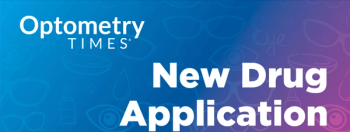
Experts issue new vision screening recommendations for children ages 3 to 5 years
The National Expert Panel to the National Center for Children’s Vision and Eye Health at Prevent Blindness has issued new recommendations to provide an evidence-based approach to screening children from 36 months to 72 months old.
Chicago-The National Expert Panel to the National Center for Children’s Vision and Eye Health at Prevent Blindness has issued new recommendations to provide an evidence-based approach to screening children from 36 months to 72 months old. The recommendations also include system-based public health strategies to ensure improved surveillance and program accountability as it relates to
“It would be great if every preschool child received a comprehensive eye exam, but that is not the current reality,” says Susan Cotter, OD, MS, FAAO, lead author of the recommendations, speaking exclusively to Optometry Times. “However, many kids undergo a vision screening in their pediatricians’ offices or at a Head Start or community screening. Opinions vary widely regarding which techniques should be used.”
The panel and its recommendations
The National Expert Panel consists of leading professionals in optometry, ophthalmology, pediatrics, public health, and other related fields. Dr. Cotter says the panel reviewed the current scientific literature to explore best practices for vision screenings for children in this age range.
The panel recommends that children 36 to 72 months be screened annually (best practice) or at least once using one of the best-practice approaches (accepted minimum standard).
There are two best practice vision-screening methods for preschool-aged children. The first, according to the experts, is monocular visual acuity testing using single HOTV letters or LEA Symbols surrounded by crowding bars at a 5-ft test distance, with the child responding by either matching or naming. The second is instrument-based testing using the Retinomax autorefractor or the SureSight Vision Screener with the Vision in Preschoolers (VIP) Study data software installed (version 2.24 or 2.25 set to minus cylinder form).
The recommendations say that using the Plusoptix Photoscreener is acceptable practice, as is adding stereoacuity testing using the Preschool Assessment of Stereopsis with a Smile (PASS) stereotest as a supplemental procedure to visual acuity testing or auto-refraction.
“Our goal was to determine the methods expected to provide the ‘most bang for your buck’ in identifying amblyopia, strabismus, significant refractive error, and their associated risk factors, when used by a nurse or lay screener in educational, community, public health, or primary healthcare settings,” says Dr. Cotter.
“If a child undergoes a vision screening, then we want it to be a good one-that is, a screening that has a high likelihood of correctly identifying the kids in need of professional eye care. With the best tests, lay or nurse screeners can identify 78 to 88 percent of preschool children with the most severe vision conditions,” she says. “Finally, there also must be mechanisms in place to ensure that the children who fail the screenings receive appropriate follow-up care with an optometrist or ophthalmologist.”
Collecting screening data
The National Expert Panel also
“Currently, there is a lack of data on the proportion of children screened and no effective system to ensure that children who fail screenings access appropriate comprehensive eye examinations and follow-up care,” the authors write.
The panel also
“Currently, providers of vision screening and eye examinations lack a system to provide national- or state-level estimates of the proportion of children who receive either a vision screening or an eye examination,” the authors write.
The panel developed a
The American Optometric Association
“While schools or pediatricians may provide periodic vision screenings, these screenings often miss more than they find,” the AOA stated. “Because of vision screenings’ particularly low sensitivity and selective testing, many children may pass the screening while having undetected vision disorders, delaying further examination and profoundly affecting children’s quality of life.”
For more information on the recommendations, visit
Newsletter
Want more insights like this? Subscribe to Optometry Times and get clinical pearls and practice tips delivered straight to your inbox.



















































.png)


